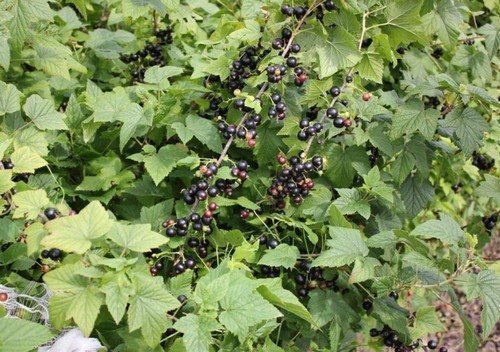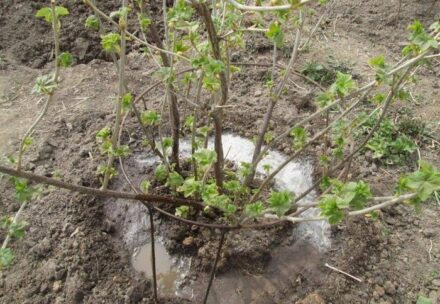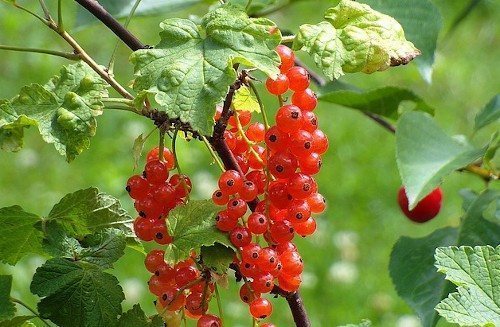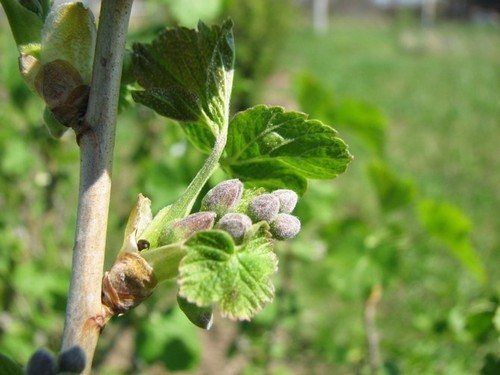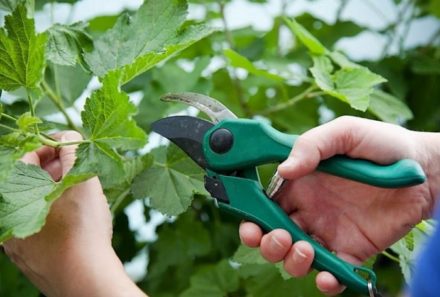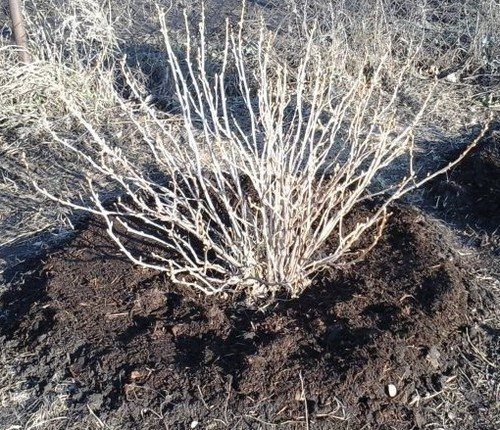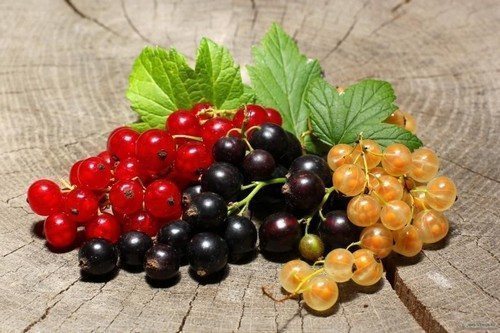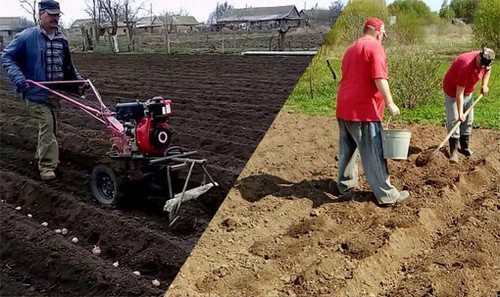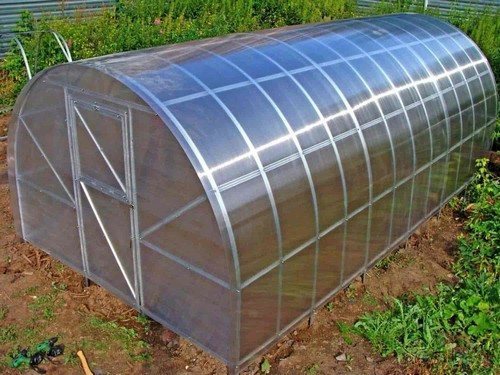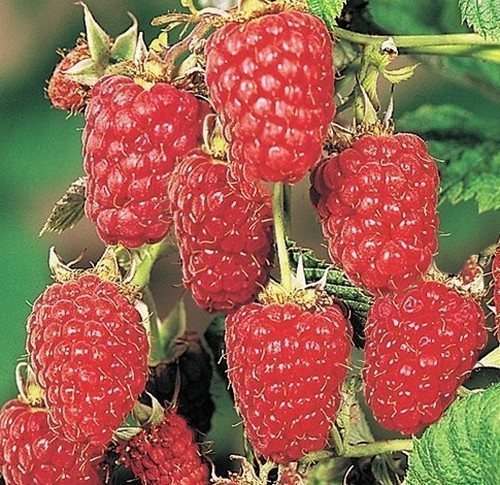Spring is the right time to protect currants from diseases and harmful insects. This should be done before the buds open, while all processing methods are available and you can not be afraid of harming the delicate greenery.
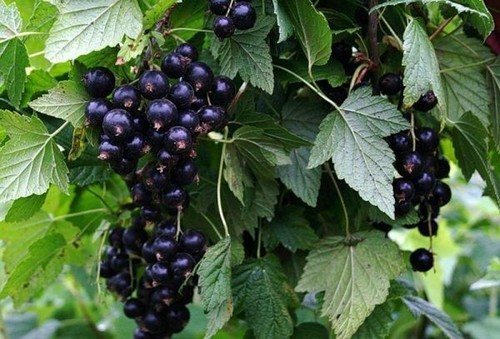
Preparing bushes for processing
The first step is to clear the area under the bushes and between them, collecting fallen leaves and broken twigs, and then loosen the soil and enrich it with fertilizers. Currants are sensitive to weeds, so mulching with a thick layer of grass, peat or rotted sawdust is recommended.
After this, you need to carefully examine the bushes and carefully get rid of damaged branches so that they do not consume the vitality of the entire plant and do not infect it with diseases. Frozen branches are shortened to the first healthy bud. Then cut off all diseased spherical buds in which pests can multiply. It is also advisable to cut off shoots older than five years. As a result, after pruning, 8–15 healthy branches should remain. The sections are treated with garden varnish.
For prevention, you can douse the bushes with hot water (80 OC) with the addition of Creolin (20 ml per 5 l), salt or potassium permanganate solution, after covering the bases of the bushes with a tarpaulin so as not to harm the roots. All debris and removed parts must be burned to destroy the pest-friendly environment. If most of the bush is affected, it is better to burn it entirely.
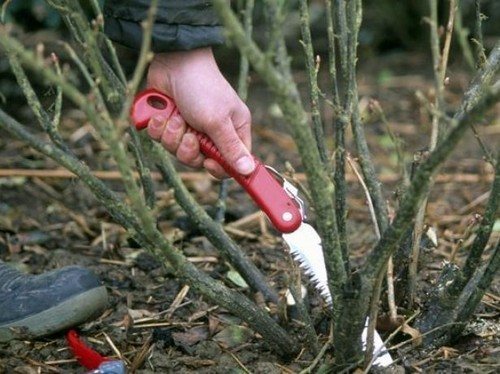
Treatment with chemicals
Processing of bushes occurs in several stages.The first begins at the very beginning of spring at above-zero temperatures, until the buds swell. Most often, insecticides and acaricides of contact action are used, which clog the eggs and prevent insects from being born. In order not to overload the bushes with different types of chemicals, it is better to choose drugs with a complex effect that provide protection not only from pests, but also from fungi (Nitrafen, Preparation 30, copper sulfate). For maximum efficiency, you need to carefully treat all shoots and buds, not forgetting the soil.
The second stage consists of gentle processing of the first leaves (the “green cone” phase). Contact means are being replaced by system ones. During this period, separate drugs are used to combat insects (Fufanon, Aktelik, Profilaktin) and fungi (Artserid, Bordeaux mixture, Topaz, Skor).
The last stage of spring processing is carried out during the budding period. The same chemicals are suitable for it as for the previous one.
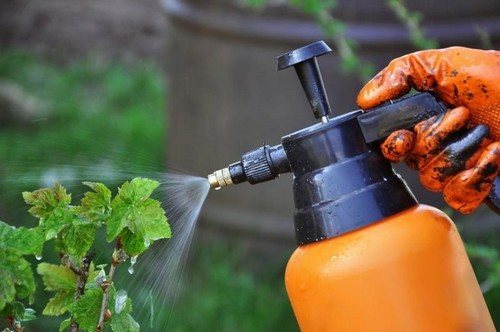
Before using any product, be sure to read the instructions and safety precautions in detail.
Traditional methods
Folk remedies are also suitable for processing currants:
- ash (50 g per 5 liters of water) – 3 days in a row;
- garlic infusion (100 g per 1 liter of water) + laundry soap (30 g per 1 liter of water) – once a month;
- onion infusion (500 g of onion per 5 liters of water) – 3 times a week;
- tobacco infusion (100 g of tobacco per 5 liters of water) – once a month;
- pine needles (a glass of needles per 2 liters of water);
- mustard (60 g per 1 liter of water).
For them to work well, it is important to wipe each leaf very thoroughly. But such means should be used only for prevention. They will not cope with serious problems.This also applies to biological products. Therefore, supporters of exclusively natural processing need to regularly and carefully care for plants to prevent severe damage.
Spring treatment of currant bushes will allow you to timely and reliably protect it from diseases and insects. Each method has its own advantages and disadvantages. Only with a competent approach and compliance with safety measures can you get a high-quality and rich harvest.


